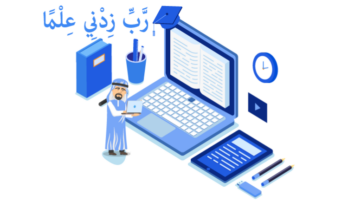Learn to how we socialize and shop, apps and automation tools are revolutionizing everyday processes. This emerging trend is what visionary entrepreneur Anthony Aires coined as the “eFormula.” eFormula refers to the idea of using cutting-edge technology like artificial intelligence, automation, and advanced algorithms to optimize regular everyday processes. It is the evolution of formulas we use for efficiency. As Anthony Aires explains, “eFormula at its core is about making everything you do easier, faster, and better using the power of technology.” The end goal is achieving growth, scalability, and maximum productivity.
Core pillars of eFormula
-
Process analysis
The first step is closely analyzing the process that needs enhancement whether it is scheduling social media posts, writing a blog, or editing a video. Identifying pain points helps determine the ideal automation solutions.
-
Technology integration
Next is integrating specialized automation technology like AI writing assistants, graphic creation tools, analytics programs, etc. The aim is to eliminate manual effort, errors, and redundancy.
-
Constant optimization
Finally, eFormula involves constantly gathering data, assessing performance, and fine-tuning integrations. Technology and processes must evolve together for the best results.
Adopting eFormula essentially means leveraging the wealth of automation solutions available today for major productivity gains across everyday tasks. Let’s look at some examples.
eFormula in action across everyday processes
Customer Engagement
Elevating customer experiences by
- Automated chatbots handling common customer queries
- SMS marketing platforms sending bulk promotional texts.
- Email sequencing nurturing leads and clients.
- Feedback collection surveys gather first-hand insights.
- The result is enhanced engagement, support, and satisfaction.
Research & discovery
Supercharging research using:
- Big data analytics revealing patterns and trends.
- Competitive analysis tools monitoring competitors.
- Market research automation surveying target groups.
- Pattern recognition algorithms identifying opportunities.
- Together this provides accurate real-time market insights.
The applications of eFormula are endless. Any process that relies on consistent repetition is ripe for automation. Implementing the eFormula approach leads to newfound efficiency.
Benefits of adopting eFormula
Embracing eFormula delivers immense benefits including:
Faster task completion
Automating repetitive steps results in huge time savings – some estimate over 40% quicker task completion. Activities get done in a fraction of the usual time.
Greater output & scalability
With less time spent on mundane tasks, output and scalability increases significantly. You accomplish a lot more in a day.
Reduced human error
Bots and algorithms minimize human error by executing tasks precisely and accurately every single time.
Deeper insights
Advanced data analysis delivers actionable insights not visible to the human eye – patterns, correlations, predictions, a closer look at eFormula and best bonus.
Improved quality
Automated processes like AI writing produce high-quality, personalized output honed for the intended audience.
Enhanced competitiveness
Early eFormula adoption gives companies a competitive edge through improved productivity and optimizations.
The benefits positively impact top and bottom-line business growth.
Key to unlocking eformula- Finding the right tools
The crucial factor that unlocks eFormula is integrating the right tools for each process. With new solutions launching constantly, how do you identify the top options?
Here are 5 tips for choosing ideal formula tools:
- Clearly define the process that needs enhancement.
- Research tools specifically built for automating that process.
- Evaluate supported features, accuracy, and user reviews.
- Ensure scalability as your needs grow.
- Prioritize easy integrations and workflows.
The tools must feel like natural extensions of you. Striking the optimal balance between automation and personalization is key.




